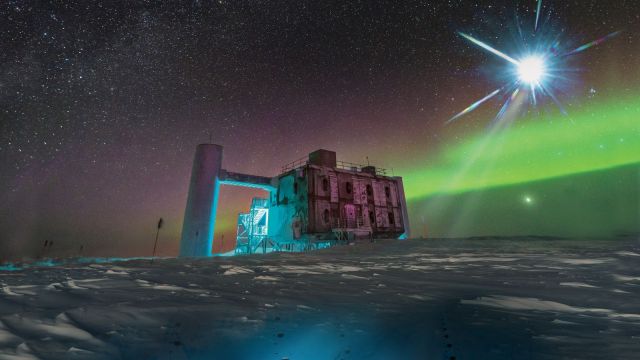Astronomers at leading research institutions worldwide have recently discovered seven potential ‘ghost particles’ traversing through Earth’s atmosphere. Neutrinos, often referred to as ‘ghost particles,’ are particles with the remarkable ability to pass through matter virtually undetected. This discovery has sparked excitement among physicists and astronomers, given the longstanding fascination with neutrinos.
Detection Method
The detection of these neutrinos was made possible by highly sensitive detectors strategically placed in various locations across the globe. These detectors are specifically designed to capture the faint signals produced by neutrinos interacting with matter, allowing for the precise recording of their passage.
Significance of the Discovery
Dr. Emily Patel, the lead astronomer on the research team, expressed her enthusiasm about the discovery, highlighting its significance in understanding the fundamental building blocks of the universe. Neutrinos offer a unique perspective into the extreme and distant corners of the cosmos.
Implications for Scientific Inquiry
The detection of these ghostly particles opens up new avenues for scientific inquiry, with implications across various fields such as astrophysics, particle physics, and cosmology. Scientists aim to analyze the characteristics of the detected neutrinos to gain insights into the cataclysmic events that produce these high-energy particles and their role in shaping the universe’s evolution.
Importance of International Collaboration
The discovery underscores the importance of international collaboration in advancing scientific exploration. Teams of researchers from diverse backgrounds collaborated to develop the sophisticated technology necessary for detecting these elusive particles, emphasizing the global effort to unravel the mysteries of the universe.
Future Prospects
As astronomers continue to analyze the data and refine their techniques, the hunt for ghost particles promises to yield even more astonishing discoveries in the future. Neutrinos hold the key to unlocking some of the universe’s most profound secrets, from understanding the nature of dark matter to shedding light on enigmatic processes within distant galaxies.
Multiple Choice Questions (MCQs):
- How did astronomers detect the ghost particles?
- A) Through telescopes
- B) By using highly sensitive detectors
- C) By analyzing cosmic radiation
- D) By studying gravitational waves
- Answer: B) By using highly sensitive detectors
- Why are neutrinos often called ‘ghost particles’?
- A) Because they emit visible light
- B) Due to their ability to pass through matter undetected
- C) Because they are easily captured by detectors
- D) Because they have a high mass
- Answer: B) Due to their ability to pass through matter undetected
- What is Dr. Emily Patel’s role in the discovery?
- A) Lead engineer
- B) Lead astronomer
- C) Lead physicist
- D) Lead technician
- Answer: B) Lead astronomer
- What field of study benefits from the discovery of ghost particles?
- A) Biology
- B) Chemistry
- C) Astrophysics
- D) Sociology
- Answer: C) Astrophysics
- What does the discovery emphasize regarding scientific exploration?
- A) The importance of individual efforts
- B) The insignificance of global collaboration
- C) The significance of international collaboration
- D) The dominance of a single research institution
- Answer: C) The significance of international collaboration
